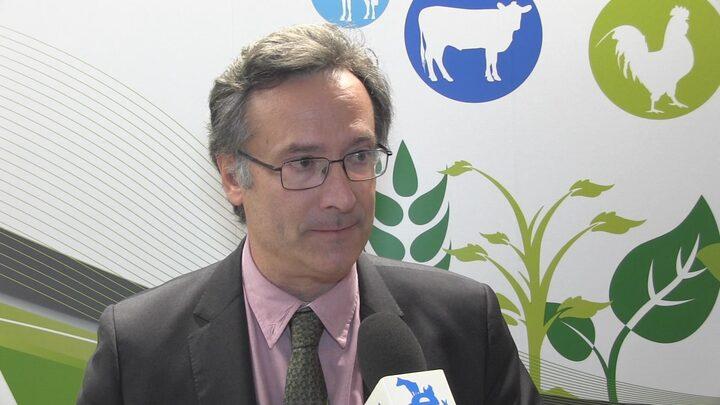Explore all the information on
Poultry diseases
When chickens are healthy they consume less feed and produce more quality eggs. They are less trouble to look after and less money is spent on medical costs. Poultry disease can spread rapidly among chickens because they are usually kept together in the chicken house. The chickens share the same feeders and drinkers, which can spread disease and infections rapidly from sick to healthy chickens. In intensive egg production systems, much focus is placed on the egg laying performance of the flock. Poultry diseases can negatively affect the health and performance of your flock. Important and common poultry diseases include necrotic enteritis, chronic respiratory diseases, gangrenous dermatitis, fowl cholera, and avian influenza.
Globion India Private Limited, the newly-incorporated subsidiary of Suguna Poultry Group, is setting up a poultry vaccine manufacturing facility in Hyderabad at an investment of Rs 42 crore. The foundation stone for the facility was laid by state minister for major industries, sugar, commerce and export promotion J Geeta Reddy on last Friday. “The Andhra Pradesh Industrial Infrastructure Corporation (APIIC) has allotted 10 acres to the company in the phase III of Genome...
Comments : 2
Recommendations: 0
Nutritionists, feed manufacturers, farmers and industry poultry managers are becoming increasingly aware of the fact that intestinal functions (i.e., digestion and absorption) and the intestinal barrier (as the first line of defense against aggressions arising from the luminal content) have major roles in animal performance and production. The following paper examines some of the processes that occur in the brush border region, among which are digestion and absorption capability, mucin...
Comments : 0
Recommendations: 0
Researchers say studies do not confirm whether wild birds are carriers of the H5N1 bird flu virus. VOA's Luis Ramirez reports from Bangkok, where experts were gathering to figure out better ways to track how the disease is spreading. Experts meeting in said they have been dealing with data that might be unreliable because there is no uniform system of checking H5N1 infection among wild birds. The Food and Agriculture Organization brought together more than 70 experts from 12 countries....
Comments : 0
Recommendations: 0
Arsenical feed additives have been used in poultry for control of coccidiosis and enhancement of growth since the discovery of activity in this group of compounds in the years after World War II and are still in use today. In particular, two compounds stand out. Nitarsone (4-nitro-phenyl arsonic acid) is used for prevention of histomoniasis in turkeys, and roxarsone (3-nitro-phenylarsonic acid) is used for improved coccidiosis control when given in combination with the ionophorous...
Comments : 2
Recommendations: 0


A Natural Choice for Growth Enhancement in Farm Animals - 3 ESSDENDIS
Suggested link
Bacteria which live symbiotically inside the blood-sucking pests called red poultry mites could be a new and effective target to prevent the spread of Salmonella and similar pathogens in chickens, turkeys and other table birds, according to scientists speaking today (Wednesday 5 September 2007) at the Society for General Microbiology’s 161st Meeting at the University of Edinburgh, UK, which runs from 3-6 September 2007. Economic losses inside the European Union caused by the red poultry...
Comments : 0
Recommendations: 0
An avian influenza (AI) response could involve emergency responders, skilled support personnel, veterinarians, personnel from Federal agencies and State departments of agriculture, employees from private industry, and State and local public-health workers. In an effort to increase preparedness among emergency responders for this potential threat, the U.S. Department of Agriculture's (USDA) Animal and Plant Health Inspection Service (APHIS) and the U.S. Department of Health and Human...
Comments : 0
Recommendations: 0
Immunoglobulins, also called antibodies or Igs, are proteins associated with health maintenance of poultry and mammals. They are secretory products of B-cells originating in the bursa of Fabricius, a small outpocket of the avian cloaca located just anterior to the vent. Surgical removal of bursa from young chicks is associated with a reduced capacity to produce antibodies to salmonella. Humans who have inherited defects in the ability to produce antibodies are...
Comments : 1
Recommendations: 0
Each link in the chain from production to processing is vital. However, the process must begin with the foundation, a healthy bird. Great technological advances have been made in reaching optimum bird health and performance, but the threat of disease is always imminent. Live production managers and service representatives face myriad challenges in maintaining an effective poultry health program. Be sure you and your company stay up to date on the latest disease prevention methods,...
Comments : 0
Recommendations: 0
Food technologist Thomas P. Oscar wants to make poultry as pathogen-free as possible. His research focuses on modeling growth and survival of Salmonella and Campylobacter—the two most prevalent bacterial food pathogens—on chicken, the most consumed meat product in the United States. Oscar and technician Jacquelyn B. Ludwig are a two-person team at a research laboratory on Maryland’s Eastern Shore. The ARS Poultry Food Safety Research Laboratory is part of the Microbial Food Safety...
Comments : 0
Recommendations: 0
Schering-Plough Animal Health has confirmed that it has secured agreement with Microbial Developments Ltd (MDL) to become sole supplier of Aviguard, the leading natural gut flora product for poultry.
This is a global agreement which becomes effective 1st June 2007. Previously Aviguard had been marketed by Bayer Animal Health. Announcing the change, David Schofield, poultry business unit director at Schering-Plough explained, "We view Aviguard as an important addition to the Schering-Plough...
Comments : 0
Recommendations: 0


Supplemental Bacillus subtilis DSM 32315 modulates intestinal structure, microbial composition and improve the performance in broiler chickens
Suggested link
In a recent survey, it was estimated that the cost of subclinical necrotic enteritis was as high as $0.05 per bird (Van der Sluis, 2000). Using these estimates and 1999 estimates on world broiler meat production, the cost of necrotic enteritis to the poultry industry globally is nearly $2 billion (Anonymous, 2000). Both clinical and subclinical necrotic enteritis is common in all poultry growing areas of the world (Van der Sluis, 2000). The disease was first described by Parish (1961) and...
Comments : 0
Recommendations: 0
The ban of antibiotics in Europe has driven worldwide the implementation of alternative strategies in order to prevent proliferation of pathogenic bacteria, thus maintaining health and performance status and optimizing digestion in poultry. Several approaches have been developed to directly...
Comments : 0
Recommendations: 0
Animal health company Merial in the US has sold its St. Louis blending facility and rights to certain anticoccidial products to Huvepharma.
In addition to the physical facilities, the two companies have also reached agreement for transfer of marketing rights for a number of products manufactured at the site, which are mainly anticoccidials for use in poultry:
• Amprol® (amprolium) 25% Premix (sold in US and Canada)
• Amprol 20% soluble powder (sold in US)
• Amprol 9.6% solution (US...
Comments : 0
Recommendations: 0
Each year, U.S. poultry producers raise about 7 billion broilers. They use a combination of antibiotics and vaccines to protect these birds from infectious diseases. Antibiotics are critical to ongoing efforts to fight off diseases and infections; they have been able to kill or stop growth of many different kinds of protozoa and parasites as well as bacteria.
One major disease of chickens -- coccidiosis -- is named after intestinal parasites collectively referred to as coccidia, which are...
Comments : 0
Recommendations: 0
Ohio State University's Center for Diagnostic Assays (CDA) has come up with a first-of-its-kind test for the detection of very virulent infectious bursal disease virus (vvIBDV), a highly contagious disease of poultry that is causing major losses to this multibillion-dollar industry worldwide and is threatening to invade the U.S. Daral Jackwood, a molecular biologist with the university's Food Animal Health Research Program (FAHRP) on the Ohio Agricultural Research and Development...
Comments : 0
Recommendations: 0
Wide use of a mushroom extract to protect poultry against a major parasitic disease is now closer, thanks to an Agricultural Research Service scientist and her South Korean colleagues.
The researchers -- led by immunologist Hyun Lillehoj at the ARS Animal Parasitic Diseases Laboratory in Beltsville, Md. -- developed a technique for controlling coccidiosis, which costs the world's poultry industry billions of dollars in losses annually.
The new method is the subject of a patent...
Comments : 0
Recommendations: 0
South Korean quarantine officials are to slaughter 236,000 poultry after an outbreak of the H5N1 form of bird flu at a chicken farm.
The outbreak occurred at a farm in Iksan, about 250km (155 miles) south of Seoul, earlier this week.
Test results confirmed the outbreak was caused by a type of H5N1 virus, the country's agriculture ministry said.
It said all birds within a 500-metre (1,650-foot) radius would be culled to prevent the virus from spreading.
The ministry also said it...
Comments : 1
Recommendations: 0
The European Commission has approved a financial package of €193 million to support programmes to eradicate, control and monitor animal diseases in 2007. The 155 programmes which were selected for EU funding will tackle animal diseases that impact both human and animal health. The large EU contribution towards these programmes reflects the high level of importance attached to disease eradication measures, for the protection of both animal and public health. Markos Kyprianou,...
Comments : 0
Recommendations: 0
Laboratory results received today have confirmed Newcastle Disease on a poultry holding in East Lothian. The results from Veterinary Laboratories Agency in Weybridge follow investigation of suspect disease at the holding in Fenton Barns, Drem. Newcastle Disease is a disease of poultry. It is not Avian Influenza and has no significant implications for public health. In response to this confirmation the Scottish Executive, Defra and the State Veterinary Service are...
Comments : 0
Recommendations: 0
Warnex Inc. announced that its Salmonella test used with the Warnex TM Rapid Pathogen Detection System has been approved by the U.S. Department of Agriculture's (USDA) National Poultry Improvement Plan (NPIP). The objective of the National Poultry Improvement Plan is to provide a cooperative industry-state-federal program through which new technology can be effectively applied to the improvement of poultry and poultry products. The plan consists of a variety of programs...
Comments : 0
Recommendations: 0






.jpg&w=3840&q=75)









